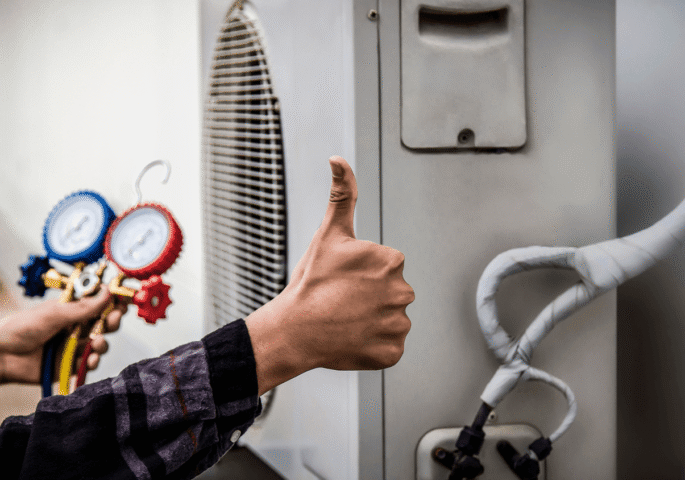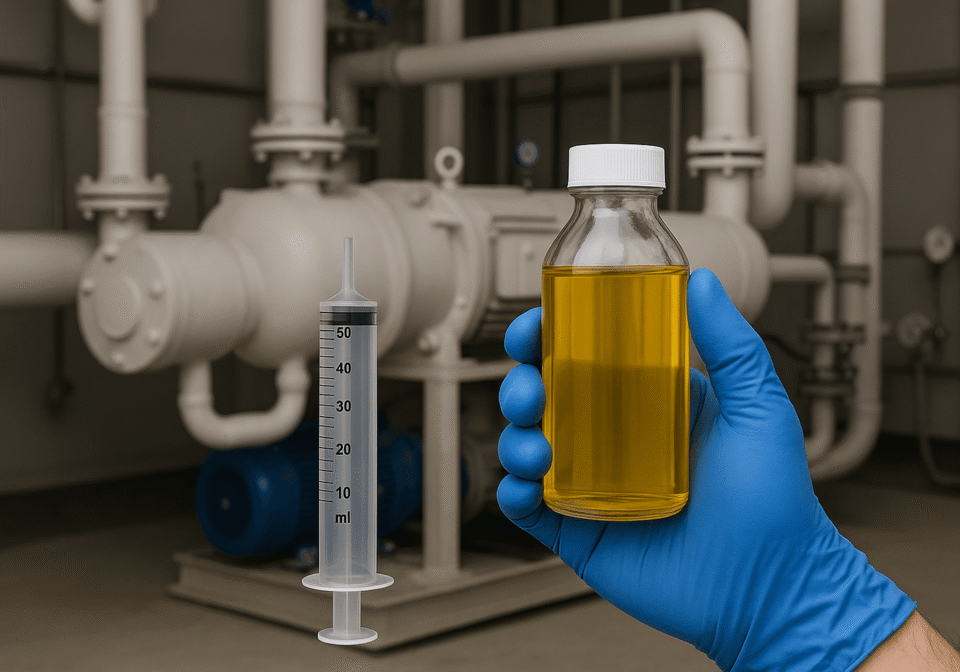Ammonia refrigeration systems are widely used in industrial applications due to their efficiency and environmental benefits. However, ammonia is classified as a hazardous substance, and improper handling can lead to serious safety risks, operational disruptions, and regulatory violations. Ensuring a safe working environment requires proactive management, ongoing training, and attention to key safety concerns.
1. Inadequate Ventilation in Machine Rooms
Proper ventilation is critical in ammonia refrigeration facilities. If ventilation systems fail, ammonia leaks can accumulate, creating hazardous working conditions.
How to Correct:
- Regularly inspect and test ventilation systems.
- Ensure emergency exhaust fans activate automatically in case of a leak.
- Maintain clear access to air intakes and exhaust vents.
2. Lack of Proper Personal Protective Equipment (PPE)
Personnel must wear the right PPE when working around ammonia to reduce exposure risks. Many injuries occur due to inadequate protection.
How to Correct:
- Provide and enforce the use of gloves, face shields, safety goggles, respirators, and SCBAs (Self-Contained Breathing Apparatuses).
- Regularly inspect PPE for damage and replace as needed.
- Train employees on proper PPE usage and emergency protocols.
3. Unlabeled or Poorly Labeled Ammonia Pipes
OSHA requires all ammonia piping to be properly labeled, but faded, missing, or incorrect labels are common issues that can lead to confusion and safety hazards.
How to Correct:
- Use IIAR-recommended labeling standards to mark ammonia piping clearly.
- Regularly inspect and replace worn or missing labels.
- Include flow direction indicators to help personnel identify potential hazards.
4. Inadequate Emergency Shutdown Procedures
Not having a clear, well-documented, and practiced emergency shutdown process can delay responses and increase the risk of severe accidents.
How to Correct:
- Develop and post easy-to-follow emergency shutdown procedures at all control panels.
- Train all personnel on step-by-step shutdown protocols during emergency drills.
- Ensure emergency manual shut-off valves are accessible and clearly marked.
5. Failure to Detect Small Leaks Early
Small leaks often go unnoticed, but even minor ammonia leaks can cause serious health issues and damage equipment over time.
How to Correct:
- Conduct regular leak detection inspections using handheld sensors and fixed monitoring systems.
- Train staff to recognize early signs of ammonia exposure, such as a strong odor, eye irritation, or difficulty breathing.
- Implement a preventive maintenance schedule to replace aging seals, gaskets, and fittings.
6. Neglecting Safety Training and Refresher Courses
Infrequent or outdated safety training can lead to unprepared personnel and unsafe work environments.
How to Correct:
- Schedule regular ammonia safety training sessions for all employees.
- Conduct emergency response drills quarterly.
- Keep training materials updated to reflect the latest OSHA and IIAR regulations.
7. Improper Storage of Ammonia-Related Chemicals
Storing ammonia and related chemicals in unapproved or unorganized areas can lead to spills, contamination, and increased fire hazards.
How to Correct:
- Store ammonia cylinders in a well-ventilated, designated area away from flammable materials.
- Use proper containment for ammonia storage tanks.
- Ensure all safety data sheets (SDS) are accessible to employees.
8. Blocked or Inaccessible Emergency Exits
In an ammonia leak emergency, personnel must evacuate quickly and safely. Blocked exits can create serious hazards.
How to Correct:
- Keep all emergency exits clear and unobstructed at all times.
- Perform regular exit route inspections to ensure proper signage and access.
- Train employees to immediately report blocked exits.
9. Malfunctioning Ammonia Sensors and Alarms
If ammonia leak sensors or alarms fail to detect leaks, employees may be exposed to dangerous conditions without warning.
How to Correct:
- Test ammonia sensors weekly and calibrate them according to manufacturer recommendations.
- Install redundant detection systems to ensure reliability.
- Train personnel on how to respond to alarm triggers.
10. Overlooking Pressure Relief Valve (PRV) Maintenance
Pressure relief valves prevent excessive pressure buildup but can fail if they are not properly maintained or replaced on time.
How to Correct:
- Inspect PRVs annually as part of a mechanical integrity program.
- Replace PRVs before expiration dates per IIAR-6 standards.
- Keep maintenance records for all PRV inspections.
11. Incorrect Use of Lockout/Tagout (LOTO) Procedures
Improper LOTO procedures increase the risk of accidental ammonia releases during maintenance work.
How to Correct:
- Ensure all employees receive LOTO training for ammonia systems.
- Require lockout before performing any repairs or maintenance.
- Post clear LOTO procedures near control panels.
12. Poor Documentation of Maintenance Records
Failing to maintain detailed maintenance records can result in non-compliance issues during inspections.
How to Correct:
- Keep accurate maintenance logs for all ammonia refrigeration equipment.
- Digitally store inspection reports and work orders for easy reference.
- Regularly review maintenance records to ensure compliance.
13. Inadequate Spill Containment Measures
If an ammonia spill occurs, an effective containment system is necessary to prevent spread and exposure.
How to Correct:
- Ensure proper drainage and containment systems are installed.
- Store spill response kits near high-risk areas.
- Train staff on ammonia spill containment procedures.
14. Unsecured or Worn-Out Ammonia Hoses
Leaking or damaged hoses pose a high risk of accidental ammonia releases.
How to Correct:
- Inspect hoses regularly for signs of wear, corrosion, or leaks.
- Replace aging hoses according to manufacturer recommendations.
- Store hoses securely to prevent accidental damage.
15. Ignoring Routine System Inspections
Skipping routine system inspections increases the likelihood of unexpected failures and compliance violations.
How to Correct:
- Schedule routine system inspections at least quarterly.
- Assign responsibility for inspections to trained personnel.
- Address all identified safety issues immediately.
Final Thoughts: Prioritize Safety in Ammonia Refrigeration
By addressing these 15 common ammonia safety issues, your refrigeration personnel can improve workplace safety, improve regulatory compliance, and prevent costly incidents. Implementing preventative maintenance, proper training, and safety protocols ensures that ammonia refrigeration systems operate efficiently and safely.
Want to stay ahead of ammonia refrigeration safety standards? Invest in regular employee training, routine system maintenance, and proactive safety inspections to keep your facility operating at peak performance.


